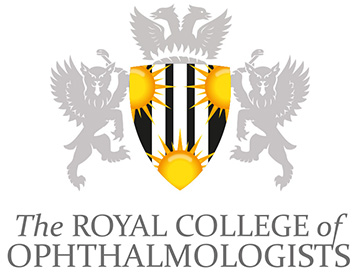Increasing demand on hospital eye services risks patients losing vision
16 March 2016
Our President, Professor Carrie MacEwen appeared on BBC Breakfast TV on 16 March 2016 to discuss capacity and demand issues with eye services in the NHS. She has authored the below article for the BBC’s Scrubbing Up.
Eyesight is the one sense people fear losing the most. Many eye diseases which cause sight loss are more common in older people and our aging population means the demand on ophthalmology, like all areas of healthcare, is increasing like never before.
Hospital attendances have increased year on year in the UK, with over 100 million outpatient appointments made in England alone during 2013-14 of which 10% are for eye care. Common eye conditions which were previously untreatable, such as age related macular degeneration, can now be treated successfully, but this adds to the demand on eye clinics. Efforts to create more care in the community show no evidence of an actual reduction in demand in hospitals. With an increase of up to 30% in eye clinic attendances over the last five years, we can no longer ignore the pressure building up in ophthalmic services.
Targets were introduced to ensure patients avoid long waits before receiving hospital treatment. Hospitals who fail to meet these targets can face fines and sanctions. But these targets apply to ‘new’ patient referrals, the most relevant being that patients must have received an appointment and undergone treatment, if required, within a specified period of time (this time varies in the four home nations from 18 – 26 weeks). This system can, and does, distort clinical priorities.
The reality is that increasing demand for eye clinic appointments comes from patients with chronic eye diseases, such as macular degeneration, glaucoma and diabetic eye disease. These patients are the most vulnerable and at the greatest risk of irreversible loss of vision. These conditions require long-term ‘return’ or ‘follow-up’ appointments for repeat monitoring and regular treatment procedures.
These follow-up appointments are more likely to be postponed or simply be lost in the system for months, and sometimes years, to accommodate new referrals in already oversubscribed clinics.
As there are no targets for follow-up patients, data are not routinely gathered, making it impossible to determine the magnitude of this problem. However, a search undertaken by the National Reporting and Learning System (NRLS) identified nearly 500 incidents describing loss or deterioration of vision (130 severe harm and 350 moderate harm) from such delays between 2011 and 2013, although details from the incident report summary do not determine extent or permanence of the sight loss, nor how much sight loss was caused by delay and how much by progression of the underlying condition.
More recently, the Addenbrookes Hospital (Cambridge University Hospitals NHS Foundation Trust) CQC report made repeated mention of unsafe delays to ophthalmic follow up in clinics causing serious incidents and harm.
These findings strongly reflect clinicians’ experiences and The Royal College of Ophthalmologists is carrying out a national study to identify patients who have come to harm due to hospital initiated delays for follow up appointments. This study has not yet formally reported but preliminary results indicate that at least 20 patients per month suffer severe visual loss. Affected patients range in age from seven months to 92 years and delays of up to four years have been recorded.
Looking back, this issue has been repeatedly raised and recognised, but remains unresolved. As far back as 2003, 25 patients lost vision due to eye department appointment cancellations at the Bristol Eye Hospital. This was widely reported, including to the Commons Public Administration Committee. Insufficient capacity coupled with targets for new patients were recognised to be distorting clinical priorities for patients needing return appointments.
In 2009 the National Patient Safety Agency (NSPA) received 44 reports of concerns about patient safety due to delays in appointments for glaucoma patients, of whom 13 went blind over a 4 year period. The Rapid Response Report that followed asked for commissioners and providers to open dialogue about data collection and to introduce safety measures to prevent delays for patients who were waiting for treatments or monitoring.
Ophthalmologists, like all doctors want what is best for their patients, and whilst many hospitals are taking positive action to deal with these delays and to find ways to meet the demand on the limited capacity available in eye services, the response to this problem is variable amongst regions and across the devolved nations.
Solutions may be seen as difficult, but include working to protocols and guidelines to optimise efficient care; utilising the expanded skills and roles of ophthalmic nurses, optometrists and orthoptists; increasing networks between primary and secondary care and educating and empowering patients.
At the same time there should be a review of current targets so that more equitable care can be provided for new and review patients on the basis of urgency of clinical need; mandatory data should be collected and monitored for follow up appointments, postponements and cancellations; safety mechanisms should be introduced to identify and appoint patients who are falling outwith their review time and data regarding hospital initiated deferrals should become an outcome measure for all ophthalmic services.
The future of all health care involves chronic disease management – therefore such principles are applicable to all specialties.
This approach requires close collaboration with health decision and policy makers, commissioning bodies and partners in the ophthalmic sector so that ophthalmic care is coordinated, cost effective and very firmly patient-centred.
Professor Carrie MacEwen
President, The Royal College of Ophthalmologists
